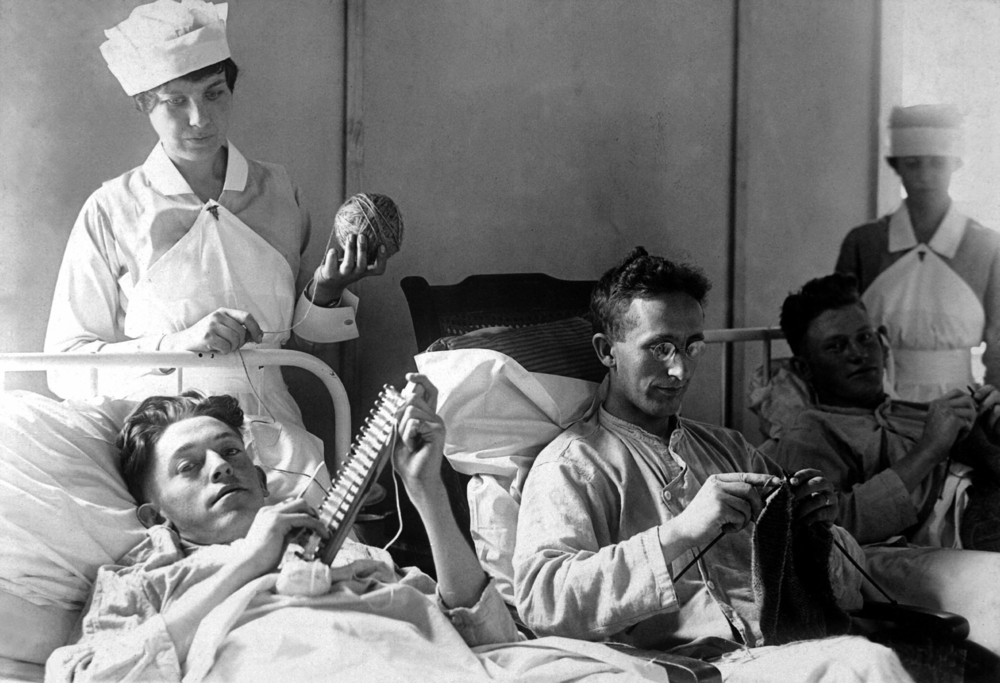
Origins of Medicine: Physical Therapy
If you have recovered from a serious injury or major surgery, then you probably already know that physical therapy is a field of health care that emphasizes strengthening muscles, promoting mobility, and reducing pain. Physical therapy may utilize one or all the following treatment modalities to achieve these goals:
- Therapeutic exercise
- Heat and cold therapy
- Electric stimulation
- Neuromuscular reeducation
- Ultrasound
Although physical therapy has only been a formal medical discipline for a couple of centuries, its roots go back many thousands of years to ancient cultures like the Greeks, Romans, and Chinese. Many of the principles that still govern modern physical therapy come from these ancient civilizations.
Ancient Origins of Physical Therapy
The Greeks were the first to embrace logical and rational thought, and this kind of thinking helped them develop many of the medical fields that still exist today including anatomy and embryology. This includes an early form of physical therapy. The ancient Greeks recognized that certain kinds of activities improved health and function. Among these were soaking in hot springs and manual therapy.
The Romans adopted many of the Greek medical philosophies and added their own improvements. The Roman physician Galen used gymnastics and movement exercises to help rehabilitate injured soldiers.
Among the first cultures to use bodily movement for its therapeutic benefits were the ancient Chinese. As early as 3,000 BCE, the Chinese were using “Gong fu” The ancient Chinese and Japanese cultures also encouraged hydrotherapy, i.e., soaking and moving in water.
Modern Incarnation of Physical Therapy
It wasn’t until the 18th century that modern physical therapy was formally founded. Sweden established a Royal Central Institute for Gymnastics which helped pioneer the use of exercise to treat certain health conditions.
The Swede Per Henrik Ling is considered the father of modern physical therapy. Ling recognized that fencing helped him manage his rheumatism, gout, and lung disease. He began to combine repetitive body movements with massage to rehabilitate himself. This was the first time that gymnastics was actively employed to heal.
Shortly after Per Henrik Ling founded the Royal Central Institute for Gymnastics, physiotherapy spread abroad. In 1884, four British nurses founded the Chartered Society of Physiotherapy in England. In 1913, the School of Physiotherapy was established in New Zealand, followed the next year in which a similar school was founded at Reed College in the U.S.
A polio epidemic in the United States in 1916 helped publicize the benefits of physical therapy. At the time, there was no vaccine or cure for polio which paralyzes and weakens muscles. Physical therapy began to be recommended to recover bodily function for polio survivors.
World War I also helped broaden the appeal of physical therapy. Injured soldiers were treated with physical therapy which included massage, hydrotherapy, and electrotherapy for the first time. Physical therapy became a staple of rehabilitation for wounded soldiers that endured through to World War II and the present day.
Physical Therapy in Its Current Form
Modern physical therapy has evolved quite a lot since the early days of the 20th century. One of the most significant advances was the integration of patient education. In addition to improving the strength and flexibility of patients, physical therapists also tried to teach patients how to maintain and optimize their bodily functionality as well as how to prevent future injury.
Many of the changes to physical therapy are related to scientific and technological breakthroughs including
- Ultrasound—ultrasound is most used in imaging tissue sometimes found quite deep within the body, but it may also be used to act on tissue directly. In physical therapy, ultrasound can be used to vibrate and heat tissue like muscles or joints, allowing them to function more readily.
- Heat and cold—normally used to reduce pain, hot and ice packs can also help prepare tissue for various therapies including exercise. Heat is applied to loosen up tight tissue and promote blood circulation. Cold is more effective at relieving pain and swelling.
- Infrared light therapy—this kind of low-intensity electromagnetic radiation is applied to heat body tissue and improve wound healing. Infrared light has the ability penetrate relatively deep into tissue so the healing benefits can be quite profound.
- Exercise—this is the most common physical therapy treatment and involves tailoring a program of exercises intended to improve strength, flexibility, and range of motion. While many of the exercises are intended to help recover from injury, others will help reduce the risk of repeating the injury.
- Electrical stimulation—by applying a low-strength electrical current to the area around an injury, the pain can be reduced. This occurs because the current activates the sensory neurons, preventing them from carrying a pain signal on toward the brain. Electrical stimulation may also be used to contract muscles to teach injured muscles how to function properly once again.
- Joint mobilization—this therapy requires the therapist to move your joints for you. This passive exercise helps loosen up hardened tissue, eventually making it easier for you to move your joints yourself.
- Iontophoresis—by applying a mild electrical current to the skin, the skin is made more permeable to medications. In the physical therapy setting, iontophoresis is commonly used to apply steroids which reduce inflammation.
- Kinesiology taping—by taping key areas, your therapist may inhibit muscle function, promote muscle use, manage swelling, or reduce pain.
- Whirlpool—this kind of hydrotherapy helps keep wounds clean, promote circulation or reduce swelling. Whirlpool temperatures can be adjusted to meet the needs of the patient. Although you may only need to soak in the whirlpool to obtain benefits, in many cases, your therapist may recommend that you engage in gentle exercises.
- Traction—most commonly used to treat back and neck pain, traction involves sitting or lying on a mechanical device that secures your lower body while gently stretching the affected area. Traction is most effective for patients with muscle-related back or neck pain, as well as patients with spinal nerve compression.
Article written by: Dr. Robert Moghim – CEO/Founder Colorado Pain Care
M.D. Disclaimer: The views expressed in this article are the personal views of Robert Moghim, M.D. and do not necessarily represent and are not intended to represent the views of the company or its employees. The information contained in this article does not constitute medical advice, nor does reading or accessing this information create a patient-provider relationship. Comments that you post will be shared with all visitors to this page. The comment feature is not governed by HIPAA, and you should not post any of your private health information.



